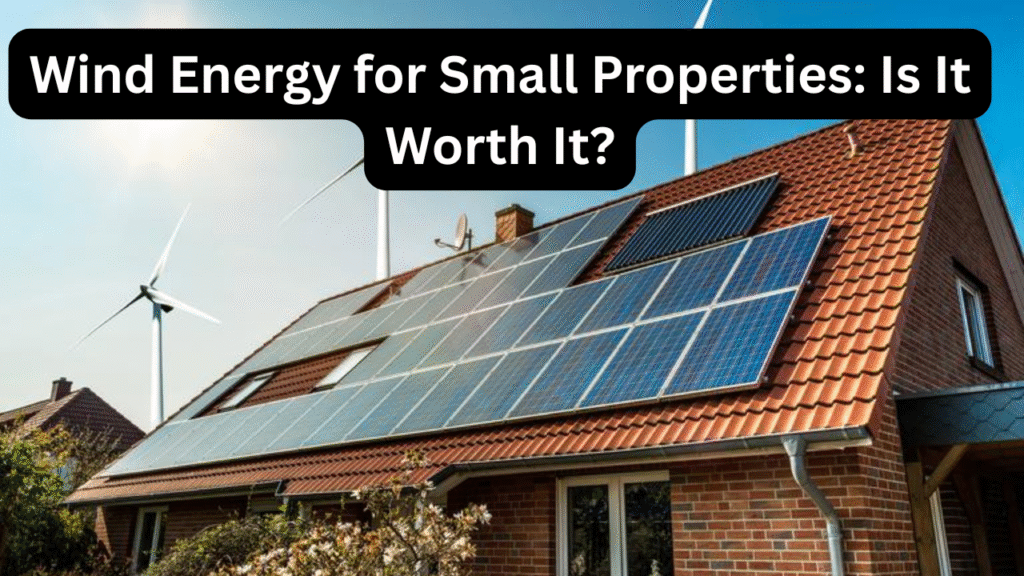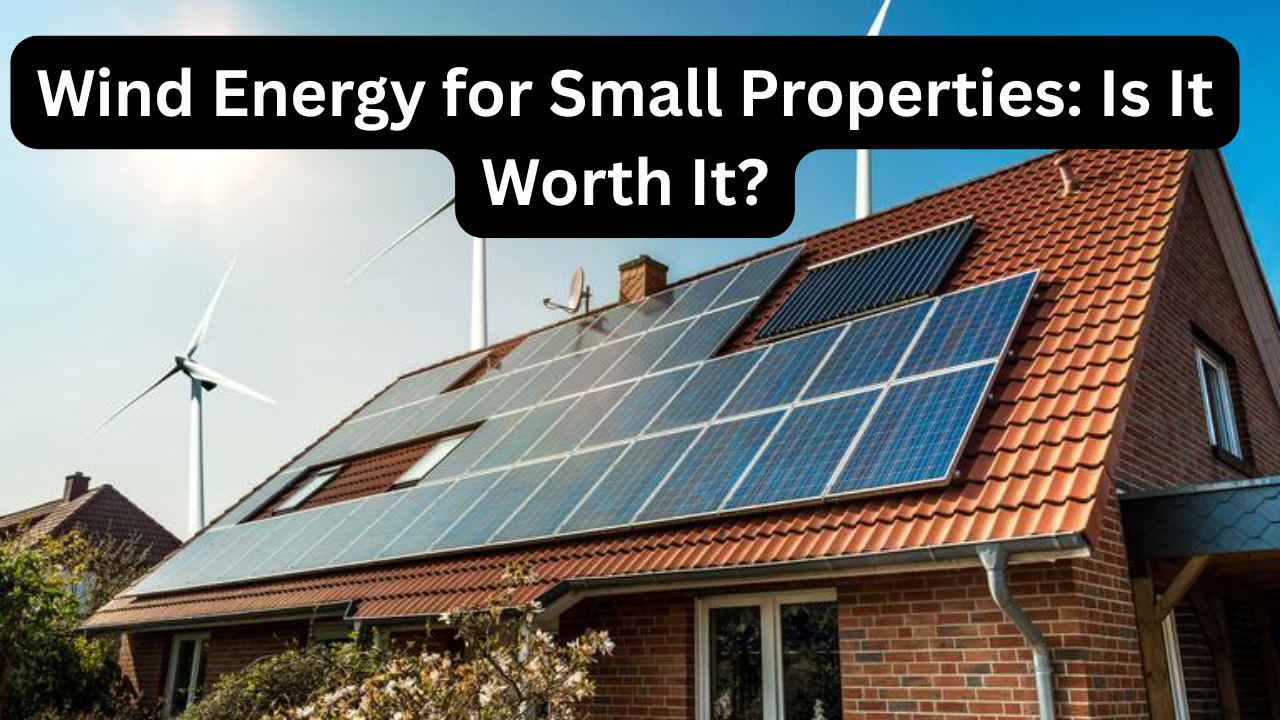
With renewable energy becoming more accessible, many homeowners are looking beyond solar power to explore wind energy as a cost-saving and eco-friendly solution. While large wind turbines are a common sight in open landscapes, smaller-scale wind systems can also work for residential properties — but their suitability depends on several factors. This article examines how wind energy works for small properties, the costs involved, potential savings, and whether it’s truly worth the investment.
How Small-Scale Wind Energy Works
Small wind turbines operate on the same principle as large-scale ones — converting wind’s kinetic energy into electricity.
Basic Process:
- Wind capture – Turbine blades spin when wind passes through them.
- Mechanical-to-electrical conversion – A generator inside the turbine produces electricity from the rotational motion.
- Energy usage – The electricity is either used directly, stored in batteries, or sent to the grid.
For small properties, turbines typically range from 400 watts to 20 kilowatts, depending on energy needs.
Benefits of Wind Energy for Small Properties
Investing in a residential wind turbine can offer several advantages:
- Lower Energy Bills – Produces free electricity, reducing reliance on grid power.
- Off-Grid Capability – Ideal for remote properties without easy grid access.
- Environmentally Friendly – Produces zero emissions during operation.
- Long-Term Savings – After the initial payback period, most of the generated power is free.
- Energy Independence – Less vulnerability to utility price hikes.
Challenges and Limitations
While appealing, wind energy for small properties has some constraints:
- Space Requirements – Turbines need open space with minimal obstructions.
- Wind Speed Dependency – Efficiency drops in low-wind areas.
- Noise and Aesthetic Concerns – Some homeowners find turbines noisy or visually disruptive.
- Upfront Costs – Installation can be expensive without subsidies.
- Maintenance – Requires periodic checks, especially in harsh climates.
Cost vs. Savings Analysis
The financial viability of wind energy depends on installation costs, local wind conditions, and available incentives.
Table: Small Wind Turbine Cost & Savings Estimates
| Turbine Size | Average Installed Cost | Annual Savings | Payback Period | 20-Year Net Savings |
|---|---|---|---|---|
| 1 kW | $4,000–$6,000 | $200–$400 | 15–20 years | $1,000–$2,000 |
| 5 kW | $20,000–$25,000 | $800–$1,500 | 13–16 years | $6,000–$10,000 |
| 10 kW | $40,000–$50,000 | $1,600–$3,000 | 12–15 years | $15,000–$25,000 |
Ideal Conditions for Small Wind Energy
To make wind power a worthwhile investment for small properties, these conditions should be met:
- Average wind speeds of at least 9 mph (14 km/h).
- Minimal obstructions like tall trees or buildings nearby.
- Adequate property size to ensure safety distance from structures.
- Access to tax credits or government incentives to offset upfront costs.
- Willingness to maintain the system for optimal performance.
Comparing Wind vs. Solar for Small Properties
Both wind and solar have benefits, but their performance depends on the location.
Comparison Table: Wind vs. Solar Energy
| Factor | Wind Energy | Solar Energy |
|---|---|---|
| Energy Source | Wind movement | Sunlight |
| Best Locations | Open, windy areas | Sunny regions |
| Installation Cost | Higher per kW | Lower per kW |
| Maintenance | More mechanical upkeep | Minimal upkeep |
| Night Production | Yes (if windy) | No |
| Lifespan | 20–25 years | 25–30 years |
Environmental Impact
Wind turbines are a clean energy source that produces no greenhouse gas emissions during operation. However, manufacturing and transportation have some environmental footprint, which is usually offset within a few years of operation.
Overview Table
| Point | Description | Benefit to Homeowner |
|---|---|---|
| Energy Production | Converts wind into electricity via turbines | Cuts utility costs |
| Off-Grid Potential | Can power remote homes without grid connection | Energy independence |
| Environmental Impact | Zero emissions during operation | Sustainable living |
| Upfront Cost | Varies by size and setup | Long-term savings possible |
| Ideal Conditions | Open space, steady wind speeds | Maximum efficiency |
| Maintenance Needs | Periodic inspections and repairs | Consistent performance |
Conclusion
Wind energy for small properties can be a game-changing solution — but only when the location has strong, consistent winds and enough open space. While the upfront costs are significant, government incentives, lower energy bills, and environmental benefits can make it worthwhile for the right homeowner. If your property meets the ideal conditions, a small wind turbine could be an investment that pays off in both savings and sustainability.
3 Quick FAQs
- Can I use wind energy if my property is in a low-wind area?
It’s not recommended, as low wind speeds greatly reduce efficiency. - How long do small wind turbines last?
Typically 20–25 years with regular maintenance. - Is wind energy quieter now than before?
Yes, modern designs are much quieter than older models, but some noise is still present.

